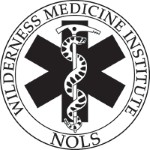EMS students to the rescue
The Review
EMS students to the rescueUDECU prepares for National Emergency Medical Services Week
BY CHARLES DOUGIELLO
Staff Reporter
Parked in a small, cluttered Public Safety garage is the pride and joy of 50 students on campus. Every day they make sure the ambulance's blue and white exterior is free from dust.
"A lot of people don't even realize that there is an ambulance on campus," said Josh Mah, co-coordinator of the University of Delaware Emergency Care Unit.
Mah and his emergency response team members are in charge of the entire workings of their organization, including record keeping, upkeep of equipment, recruitment, supplies and handling all emergency calls. Even though the ambulance only leaves the garage once or twice a day, each time the technicians receive a page, they all come running.
"We've seen everything," Mah said. "In a normal day we will respond to between one and three calls; [we] go on around 350 runs a year, which range from broken bones to cardiac arrests."
On one occasion, a student went into cardiac arrest and was revived by a member of the team while in route to Christiana Hospital, Mah said.
A sophomore environmental engineering major, Mah is in charge of an informative campaign about UDECU, which began yesterday in conjunction with National Emergency Medical Services Week.
"Nobody knows about us; that is why we are taking advantage of EMS Week," said freshman Chris Johnson, UDECU director of equipment.
UDECU now uses a "professionally constructed ambulance," enabling them to respond to emergencies in less than five minutes, Mah explained.
"We probably have a better response time than the local fire company," Mah boasted.
UDECU's response time is not the only part of the organization of which Mah speaks highly. He is also proud of the group's commitment and dedication.
"I don't know of any other student organization that puts in over 10,000 hours of volunteer work a year," he said.
Mah explained how new recruits are encouraged to observe and learn from the more experienced members. After gaining some experience and CPR certification, the member then reaches a level two ranking.
After completing a 60-hour emergency medical training course, the student is acknowledged by the state of Delaware as an ambulance attendant, promoting him or her to a level three ranking.
However, "just because the state says you can ride in the ambulance and take care of patients doesn't mean you have the expertise or experience to perform under pressure," Johnson said.
To gain level-four status, a recruit must pass a series of exams given by other members. They must also have logged in a specific amount of hours in the ambulance, Mah said.
The program's highest level is a driver who must possess all the skills required by the organization and have a complete knowledge of the entire campus.
"We do not limit ourselves to level-five status [driver]," Johnson said. He explained many of the members receive additional training outside of UDECU and become nationally certified EMTs.
Both Johnson and Mah agree students on campus should be made aware of the services UDECU provides and the history of its formation.
Founded in 1976 by University Police Officer Jack Lynn, UDECU was a result of pressure from a group of students who demanded an emergency medical service be established at the university.,
The members of UDECU will display their ambulance, hand out literature about their organization and accept applications for recruitment all this week a

